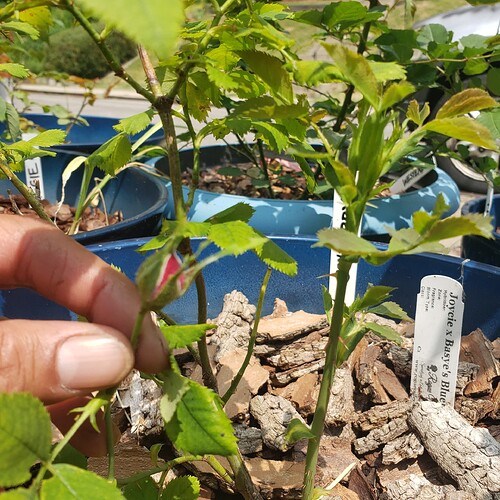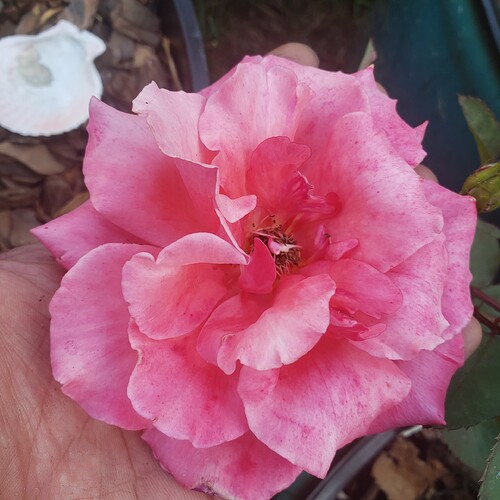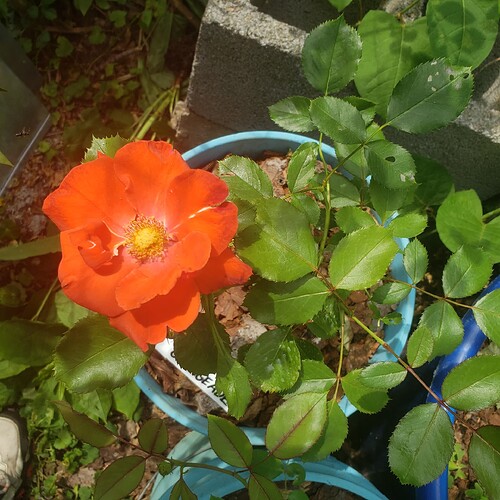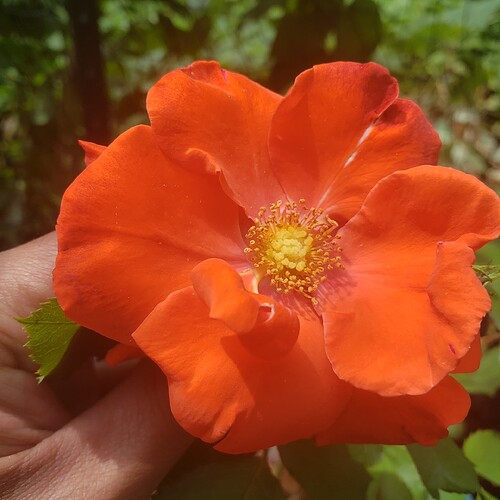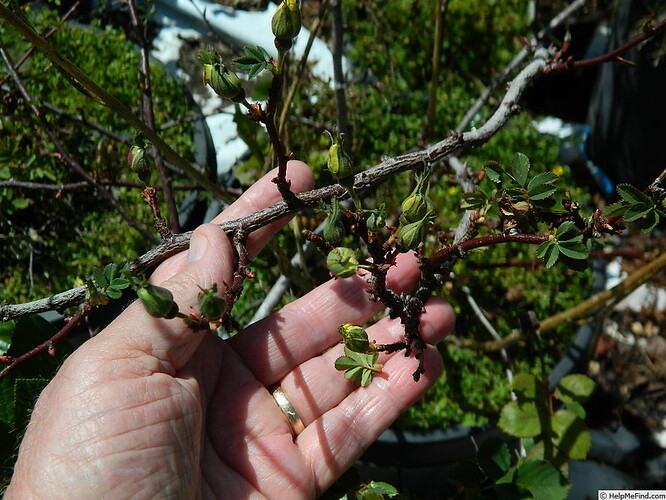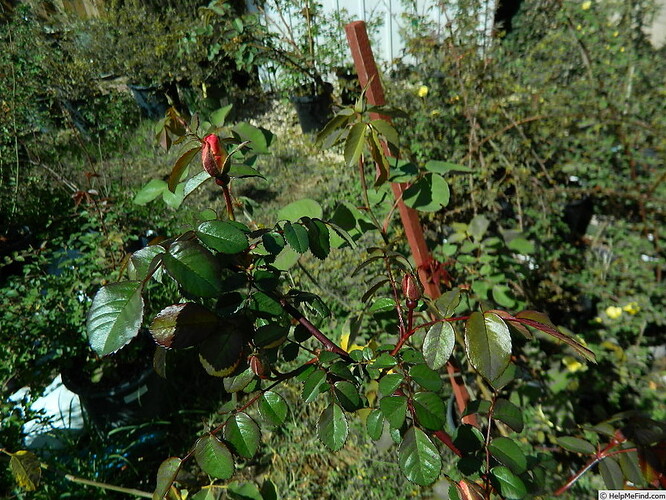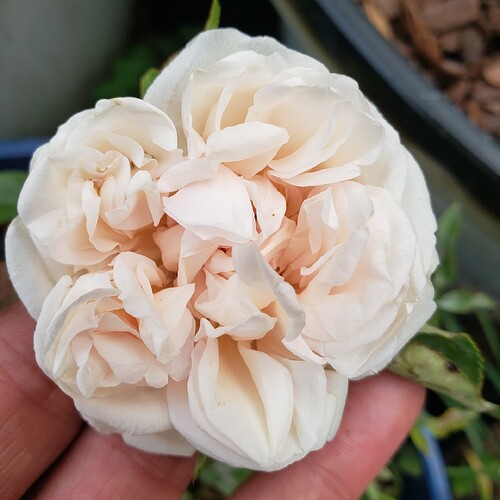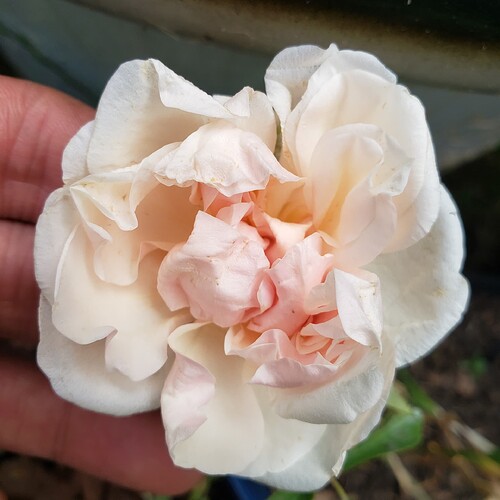Oh Hey! You are a collected breeder. Look what I got last year! It was almost winter, almost cold and I had them ship out this single band. This rose is HARD TO GET!
It smells pretty darn good I must say. Old rose-y but without the burning soapiness I got from Indigo or Madame Isaac Periere more "pure " and “earthy”. I am growing this one out right next to Maggie, La Reine, Aloha, a tiny baby Crimson Glory, Mother Dudley and Five Yuan Temple Rose currently.
I am also doing the "pot ghetto’ thing. Someday I will have my 2 acres, but maybe not here. I actually want to live up on Haleakala on Maui or maybe on the slopes of Hana/Kapo.
I saw your Nymph Series of rose photos by Viru and also your Hugonis cross. You broke a species rose with a random hybrid tea it would seem? Do you feel it was luck, determination, effort in high standards of cultivation? Please opine. I beleive in gut instinct and I read the scientific papers to know what NOT to do but aside from that… I am trying to break the Wingthorn Rose, Manners repeating Palustris, and perhaps the single Chestnut. I assembled a large arsenal. It seems to me that you have been working toward this trend of warm tropical looking loose flower forms.
I believe that a combination of factors from social desires for self-sufficient lifestyles, climate patterns, and economic disruption and reinvention will culminate into an era where the most desirable and beauteous rose form will be the large fragrant open golden apricot blush rose with a large boss of exposed stamens. The flower form will be large and loose. It will have substantial petal thickness and exhibit excellent shading with obvious bicolor veining. If Moore’s hulthemia can be worked in perhaps multiple colors. The plants will be somewhat twiggy, upright and airy with relatively few glossy leaves. I’m a designer and I am willing to put in the work to achieve this vision in time… ![]()
Fragrance will not be compromised. Fruit-sweet-clove-spice-musk are what my nose can smell as “wafting” aroma and that is what I will work to achieve. Did you ever get to experience the fragrance of Rippletoe’s Bohemian Rhapsody? Stephanie from Roses Unlimited said they still have a mother plant but they would only do it as a custom propagation. Sweet pea is not a fragrance I am entirely familiar with. It seems like such a bother to everyone anymore to ask them to supply rose specimens. Anna Pavlova is another rose which some had said has a truly amazing fragrance. It was on your list for your lost garden. Did it leave an impression on you? Other than fragrance I have little interest in it.
I have other goals with roses but so far as aesthetic movements go the culmination of one ideal tends to bring about the exultation of its near exact opposite in the following cycle. If the prior movement placed the maximum petal count formality of the reinvented old european rose garden hedge on the pedestal then the next aesthetic movement will seek out a relaxed exotic form rose, a flamboyant and lush multi-colored rose on an open and airy upright small bush and perhaps even thin pilar roses that would be capable of being contained to a large pot with a simple stake support.
Currently I live in Pittsburgh Pennsylvania. It’s my hometown but I have lived all over the continental US in my time. If I leave again it will be for the islands. I am a first-year member of the rose society here but they are still utilizing Covid era remote meeting procedures so it has not been the social opportunity I was hoping to bring into my life.
Belle Story is an important rose to my goals. From it’s few decendents it passes on the boss of stamens better than any other rose that possesses this trait. Dainty Bess kinda demonstrates this ability but she seems to limit the petal count to singles while doing so and lacks the tendency to produce the inverse bloom form. I already have a beautiful collection of fertile “splayer” roses to play with.
Honeysweet is problematic for those who demand spotless foliage. Her splayed and spent bloom is gorgeous for unreasonable numbers of days on the bush in the heat and sun and I love the color and thickness of her leaves. I will work on it somehow. I agree Buck is not the stamp of health that many associate with his lineage but his plants are sturdy.
Orangeade and Florange are about to bloom. I will post a photo update tomorrow.
